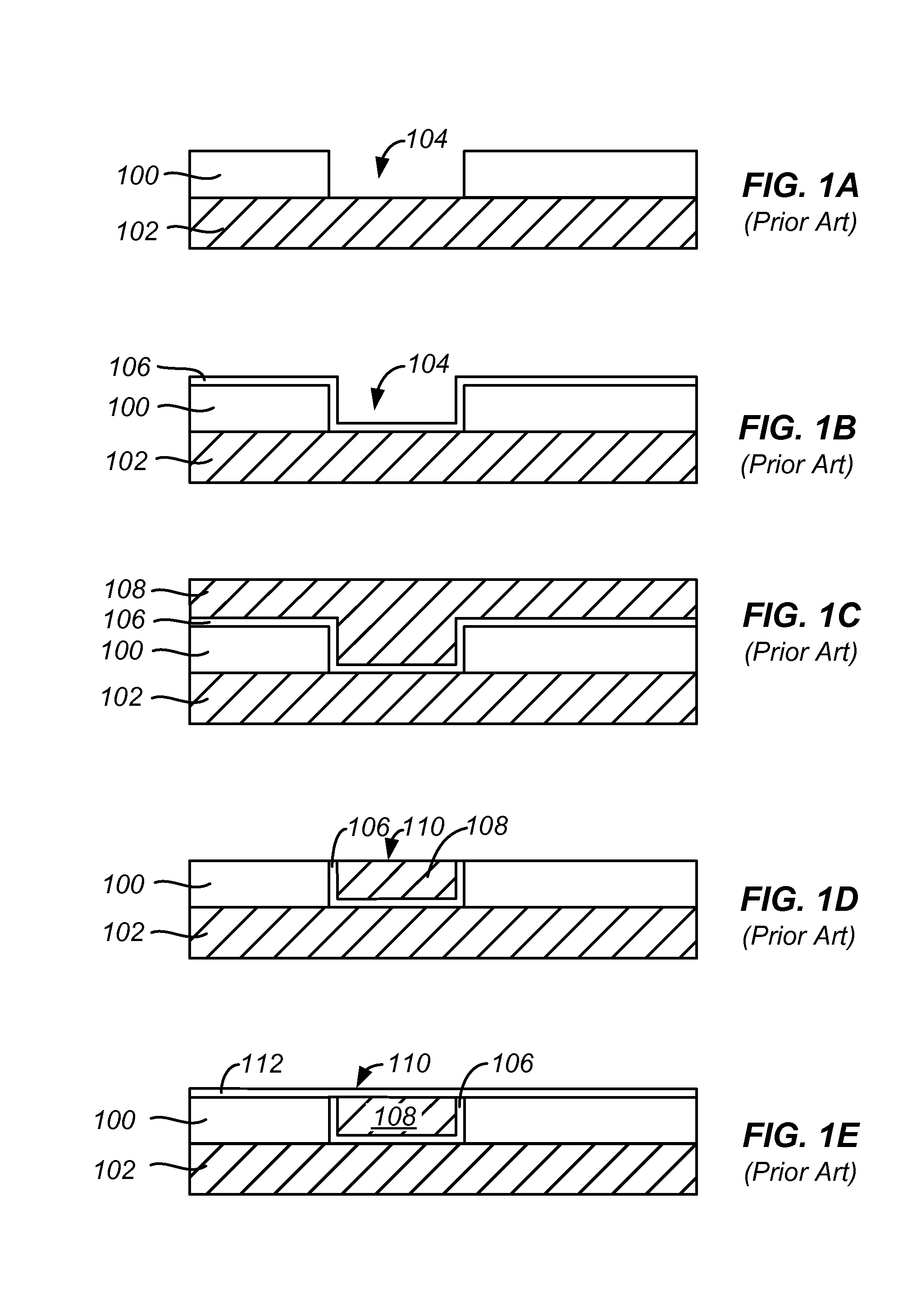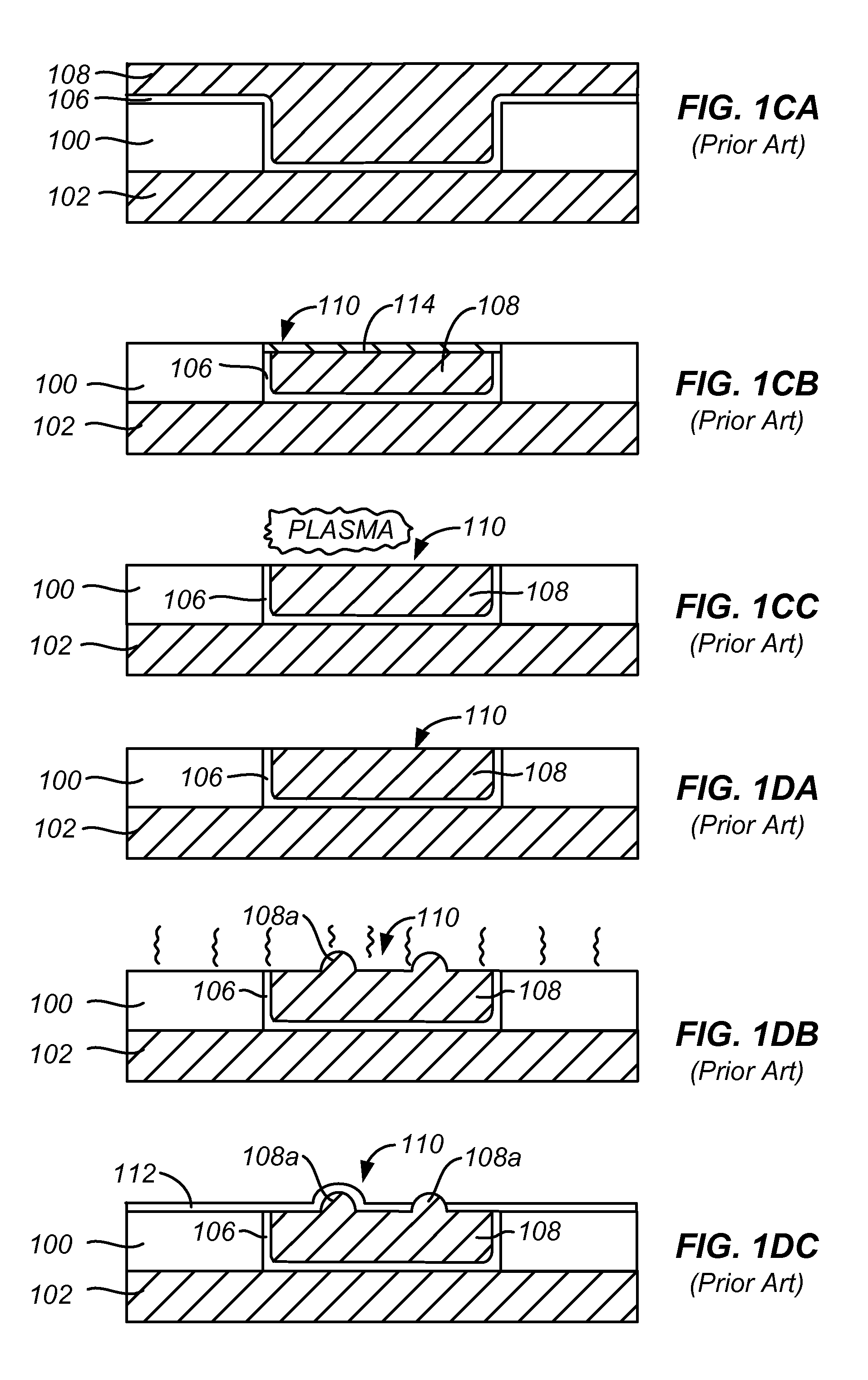Reduction of hillocks prior to dielectric barrier deposition in Cu damascene
a dielectric barrier and hillock technology, applied in the direction of coating, plasma technique, cleaning of hollow articles, etc., can solve the problems of high electrical resistance and/or shorting, affecting the performance of the interconnect structure, etc., and achieve the effect of minimizing energy and minimizing thermal budg
- Summary
- Abstract
- Description
- Claims
- Application Information
AI Technical Summary
Benefits of technology
Problems solved by technology
Method used
Image
Examples
Embodiment Construction
[0032]Unwanted formation of hillocks in copper layers during the fabrication of semiconductor devices may be reduced in accordance with embodiments of the present invention by carefully controlling a number of process parameters, alone or in combination. A first set of process parameters may be controlled to pre-condition the barrier layer deposition chamber prior to its receiving a wafer bearing a copper layer. A second set of process parameters may be controlled to minimize the energy to which the copper layer is exposed during removal of copper oxide prior to deposition of the barrier layer. A third set of process parameters may be controlled to minimize the thermal budget that the copper layer is exposed to after removal of the copper oxide. Control over each of these sets of parameters is discussed in detail below.
I. Reduction of Hillock Formation in Copper Layers
[0033]Research has indicated that the formation of hillocks in copper layers may be attributable to diffusion of cop...
PUM
| Property | Measurement | Unit |
|---|---|---|
| temperature | aaaaa | aaaaa |
| pressure | aaaaa | aaaaa |
| pressure | aaaaa | aaaaa |
Abstract
Description
Claims
Application Information
 Login to View More
Login to View More - R&D
- Intellectual Property
- Life Sciences
- Materials
- Tech Scout
- Unparalleled Data Quality
- Higher Quality Content
- 60% Fewer Hallucinations
Browse by: Latest US Patents, China's latest patents, Technical Efficacy Thesaurus, Application Domain, Technology Topic, Popular Technical Reports.
© 2025 PatSnap. All rights reserved.Legal|Privacy policy|Modern Slavery Act Transparency Statement|Sitemap|About US| Contact US: help@patsnap.com



